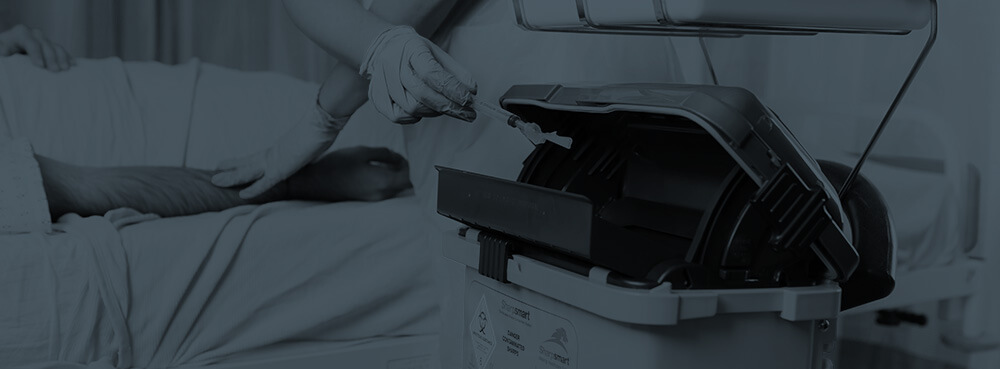EXPO-STOP 2015 Survey of Sharps Exposure

Analyzing the results of the largest sharps exposure survey in the United States
Conducted annually for the Association of Occupational Health Professionals (AOHP), the EXPO-STOP national survey (Exposure survey of trends in Occupational Practice) examines annual sharps incidence rates in the United States.
2015 marks the 5th annual EXPO-STOP survey. 182 hospitals from 38 states participated, making it the largest exposure survey conducted in the US. The paper’s authors, Dr. Linda Good and Terry Grimmond, have for several years, conducted the survey, and of the 160 hospitals participating in the 2015 survey, they identified the top 10 hospitals with the lowest incidence rates and explored the reasons for their stand-out records.
Dr. Good, Manager, Occupational Health Services, Scripps Health, San Diego, contacted the hospitals (5 teaching and 5 non-teaching) and through an interview process, tried to understand what strategies brought about such notable reductions. Dr Good concluded,
“When all strategies were gathered they could be sorted into 4 categories: Education and Training, Communication, Investigation, and Engagement. Underpinning the strategies was leadership support, and together these created a palpable “Sharps Aware” culture that permeated each hospital.”
Author Terry Grimmond supported this conclusion,
“Sharps injuries as an issue appears to have fallen off the radar somewhat and what few realise is that over 300,000 U.S. healthcare workers (and an estimated 100,000 British healthcare workers) are still sustaining sharps injuries annually – the reduction with safety devices has not been as profound as we predicted. However, our analysis documents that, by using these proven successful strategies, sharps injuries are able to be markedly reduced.”
“The over-arching theme in each of these Exposure Aware facilities,” explains Grimmond, “is a culture of safety that is practiced at all levels of the organisation, with zero incidence being the goal.”
To summarise the results, the 2015 data showed that:
- Approximately 1,000 US healthcare workers sustain a sharps injury DAILY
- 40% of reported sharps injuries were sustained by nurses, 35% doctors; and 2-4% were environmental services staff
- Of EVS staff, the two main causes were (I) handling sharps containers (ii) improper disposal of sharps (left on floor, bed, table, etc)
- Surgical sharps injuries represented 38% of all sharps injuries reported
- Four prevention strategies are identified as:
- Helping your institution become more sharps aware
- Using safety engineered devices more frequently and more correctly
- Training staff until they are competent in the use of that device/procedure
- Investigating and reporting EVERY sharps injury
At Sharpsmart, we are passionate about reducing sharps exposure risk for British healthcare personal with safer sharps containers. With almost 1,000 healthcare workers sustaining sharps injuries in the United States every day and an estimated 280 per day in the United Kingdom, it is clear that the SI rate is not anywhere near the rate that was anticipated following the 2001 OSHA NSPA and SED use. In 2001, the sharps injury rate dropped 38% in one year, however in the following 14 years, it has only dropped 1.6% per year. This figure is worrying. The strategy for hospitals (scaleable per resources available) should be firstly allocating increased OHS resources and compentency training in SED, and secondly the adoption of effective SED. This means (i) adopt SED for procedures where they were not previously used; and (ii) replace problem SED with more effective SED (note this also includes SED classified sharps containers).
With 30+ years invested into clinical safety technology, we at Sharpsmart stand by the proven results that our Sharpsmart reusable sharps collector saves lives and, equally determined by the microbiological community, is a proven Safety Engineered Device capable of averting needlestick injuries. Law in the United Kingdom asserts that if any hospital is sustaining sharps injuries associated with sharps containers, they are lawfully obligated to evaluate a safer container. We believe our unique technology, in partnership with effective competency training and enhanced awareness, can eliminate sharps injuries in the UK.
Dan Daniels, CEO and Founder
Thankyou Dr. Linda Good and Terry Grimmond for your research and commitment to driving sharps injury awareness and methodologies for change. For further information, download the authors’ AOHP National conference presentation:
Let's Talk!
Your time is valuable, and we don’t want to play hard to get. You can either phone us directly on the details listed on our contact page, or feel free to fill out this short form and one of our team members will get back to you as quickly as possible.
